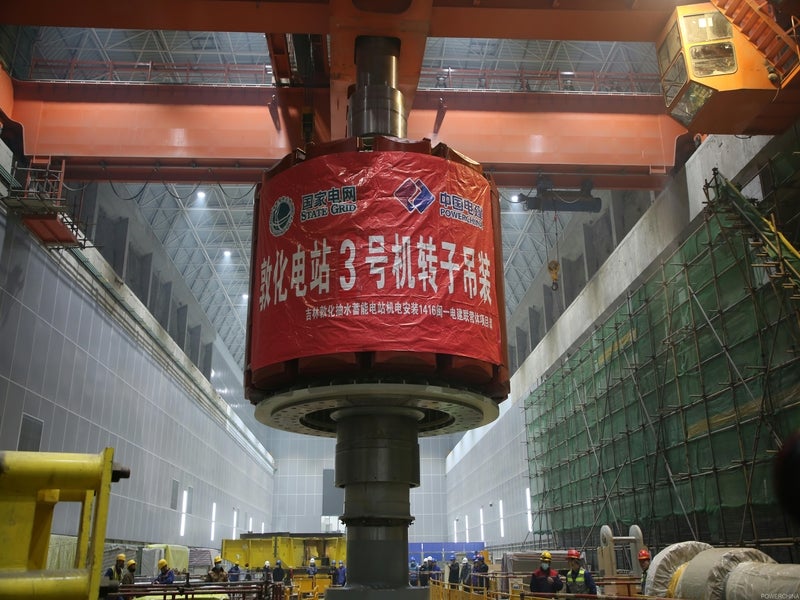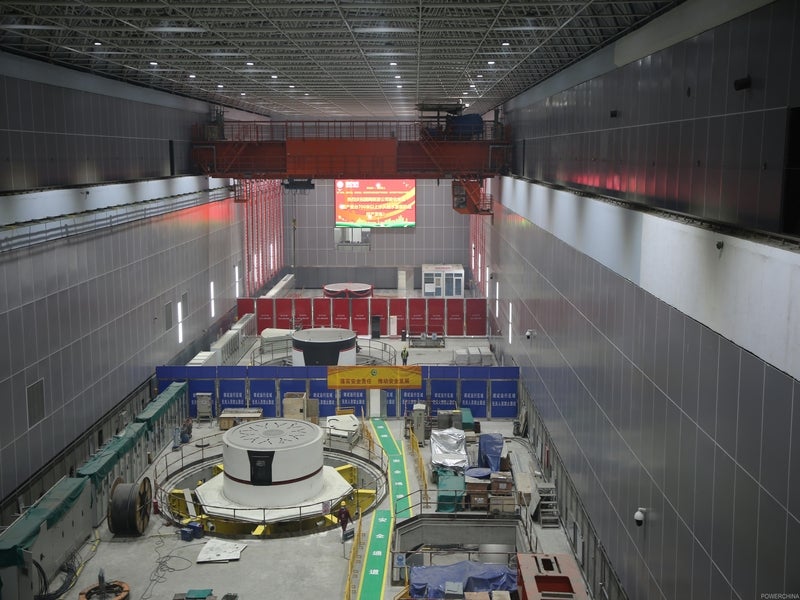The Jilin Dunhua hydropower project is a 1.4GW pumped storage power station located in the Jilin province of China.
State Grid Xinyuan, a subsidiary of State Grid Corporation of China, is the owner and developer of the £778.63m ($1.27bn) project.
China’s National Development and Reform Commission (NDRC) approved the project in October 2012 and construction started in July 2013.
The first pump turbine unit commenced operations in June 2021 followed by the commissioning of the second unit in October 2021. The remaining two units are expected to come online in the first half of 2022.
At full capacity, the Jilin Dunhua pumped storage power plant will consume up to 3.1 terawatt-hours (TWh) of electricity a year to pump water to an upper reservoir for storage and generate up to 2.3TWh of electricity a year by operating in turbine mode during peak electricity demand.
Location and site details
The Jilin Dunhua pumped storage hydroelectric power station is located in the Zhuerduo River basin near Dunhua, in the Jilin province in north-east China.
The site lies 280km away from Jilin city and 253km from Yanji city.
Upper and lower reservoir details
The upper reservoir of the Jilin Dunhua pumped storage power station is located near the origin of the Hailang River in Dunhua. The lower reservoir is located on the north-east Chahe River, a tributary of the Zhuerduo River.
The upper reservoir has a storage capacity of 6.96 million cubic metres (Mcm) at a normal water level below 1.3km.
The lower reservoir has an effective water storage volume of 7.5Mcm at a normal water level below 717m.
Jilin Dunhua pumped storage power plant make-up
The Jilin Dunhua pumped storage power station is equipped with four 350MW power units, each of which consists of a reversible Francis pump turbine unit placed in an underground powerhouse near the lower reservoir. The power plant is designed to operate at a net water head of 694m.
Other components of the project will include water diversion, discharge and tailrace systems, and a gas-insulated switch station.
Power evacuation
The electricity generated by the Jilin Dunhua pumped storage power station will be evacuated into the Jilin Power Grid through a 500kV transmission line.
Construction equipment
Two 275 tonnes (t) and one 32t bridge crane were utilised to facilitate lifting and installation during the Jilin Dunhua pumped storage power station construction.
Contractors involved in the Jilin Dunhua pumped storage power project
Chinese state-owned Dongfang Electric supplied pump turbines along with auxiliary equipment for all the four units of the pump storage power station.
Sinohydro’s three engineering and construction bureaus including Bureau 6, 11 14 and 16 were engaged in construction and electromechanical installation works of the project. Sinohydro is a division of the state-owned Power Construction Corporation of China (Powerchina).
Qingdao Han Cable was contracted to supply the 500kV cable system for the project. The contractual scope included the engineering, procurement and construction (EPC) of a 1.5km-long cross-linked polyethylene (XLPE) power cable.
Hebei Electric Power Equipment, a wholly-owned subsidiary of Powerchina, supplied the 400V switchgear, busbars and other low voltage equipment. Shunte Electric was engaged to manufacture and supply the static frequency converter (SFC) dry-type transformers for the project.
HBIS Group supplied approximately 10,000t of high-strength hydroelectric steel for penstocks and bifurcated pipes of the pumped storage power station.
Powerchina Beijing Survey, Design and Research Institute (Beijing Institute) provided design and engineering services for the project.





